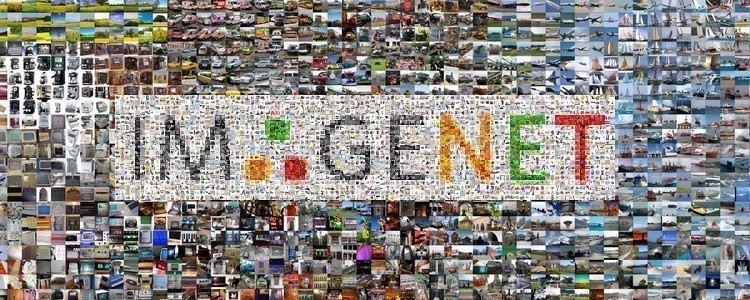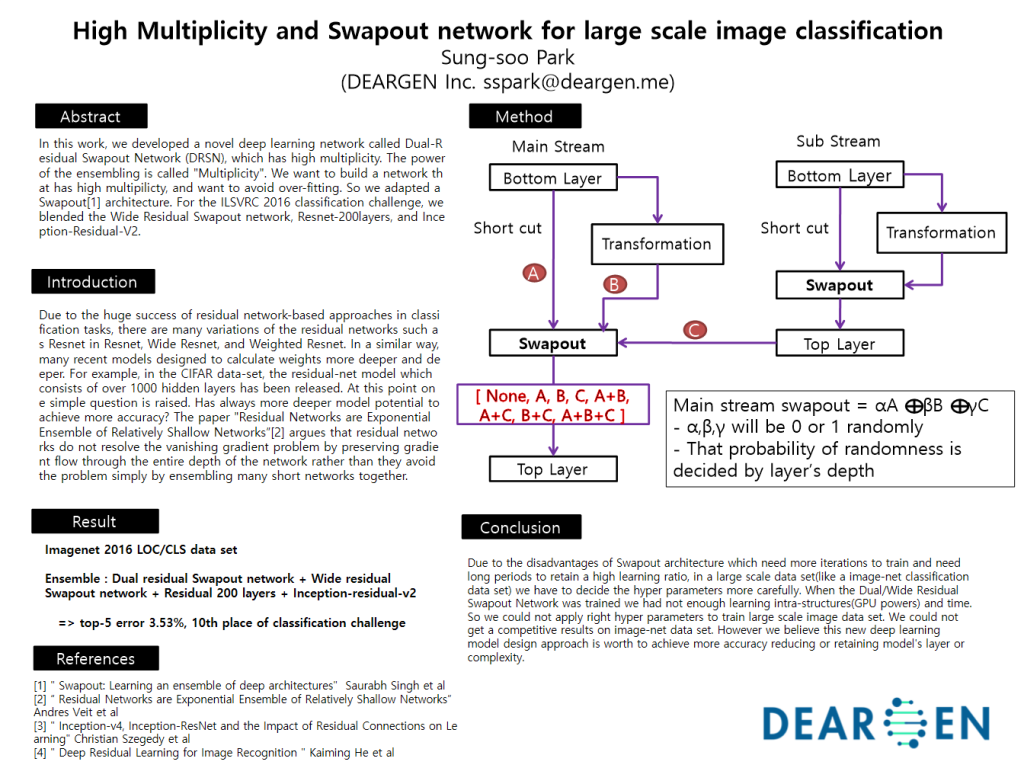Deargen, Won at ILSVRC 2016 (ImageNet Large Scale Visual Recognition Challenge)
Deargen was voted in the top 10 in the world at the ‘ImageNet Large Scale Visual Recognition Challenge (ILSVRC) 2016’, the Image Recognition International Competition. The error rate of 3.5% in recognition (the 4% human error rate) has attained, which shows a much improved result compared to the error rate of Microsoft Research Lab that is a last year’s winner.

ILSVRC is an international artificial intelligence challenge to evaluate the performance of the image recognition algorithms with a large amount of image data that are given. The ILSVRC that has held every year since 2010 is a challenge that global IT companies such as Google, Microsoft, Baidu , and Amazon, etc. are participating in. The algorithms that win this challenge have played a major role in the development of the computer vision field.
We were ranked 10th in the world as a result of an error rate of 3.5% in recognition through self-developed Dual Residual Swapout Network (DRSN) algorithm in the Imagenet Task 2a: classification field. This has resulted in a much improved error rate of 0.5% compared to the human error rate of 4% in recognition. And it also means a much improved result compared to an error rate of Microsoft Research Lab who won the last 2015 challenge.
The sector in object recognition that Deargen has participated in is a key to accurately classify object images by dividing 100,000 images into 1,000 categories. To do this, it is essential to have artificial intelligence(AI) and deep learning technologies that accurately recognize objects in the 1.2 million training images that are given.
The Dual Residual Swapout Network (DRSN) that is the our model for a participation in challenge is a model that Residual Network, a winning model of 2015 challenge, has been revised and developed. ResNet is a model that enables more complex deep learning network designs. We went one step further and designed a model to reduce the Shallow Network’s Gradient Vanishing problems while doubling the complexity of the model by introducing the swapout concept. Through this, it was able to reduce the problems of overfitting models by improving better performance than existing models.
Sung-soo Park, a director of research, said, “The development speed of deep learning models is beyond our imagination. Through the results of this challenge, AI has surpassed the human recognition rate even in image recognition. This deep learning technology will now extend to all industries including a bio, medical, manufacturing, business, finance, and advertising, etc. as well as voice and image recognition. I am confident that we will become an enterprise that leads artificial intelligence technologies in the bio and medical fields, based on the world-renowned deep learning technology.”
We proved our technical powers through the performance of the ILSVRC 2016 challenge and understood the current level of our AI technology. We will boost efforts in research to build a deep learning-based drug development model, based on continuous research.
Furthermore, as the winner of this challenge, we were invited to the European Conference on Computer Vision (ECCV) that is an International Computer Science Conference and did Poster Presentations.

[ECCV conference Poster]